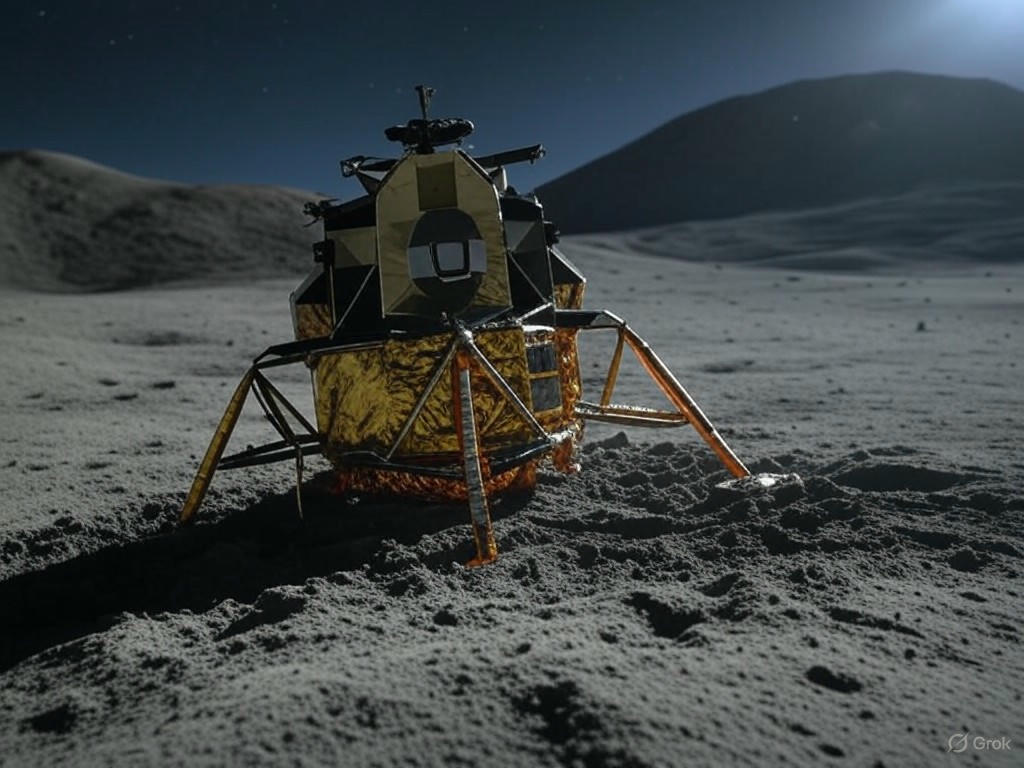Japan’s Lunar Dream Shattered: Private Lander Crashes on Moon
In a heartbreaking setback for space exploration, a Tokyo-based private company, ispace, has confirmed the tragic failure of its ambitious lunar mission. The company’s cutting-edge lander, which aimed to make history as one of the first privately funded spacecraft to touch down on the moon, crashed during its final descent. Several hours after losing contact with the craft, ispace officials announced that the mission could not be salvaged, marking a significant blow to Japan’s burgeoning private space industry.
The journey began with high hopes, as ispace sought to demonstrate the potential of commercial lunar exploration. The lander was equipped with state-of-the-art technology, designed to navigate the moon’s rugged terrain and transmit valuable data back to Earth. Its mission was not only a test of engineering prowess but also a symbol of the growing role of private enterprises in space, a domain once dominated by government agencies like NASA and Roscosmos. For ispace, a successful landing would have opened doors to future contracts, including potential collaborations for lunar resource exploration and infrastructure development. However, the abrupt loss of communication during the critical landing phase dashed those dreams, leaving engineers and scientists scrambling to analyze what went wrong.
While the exact cause of the crash remains under investigation, early speculation points to a possible malfunction in the lander’s navigation or propulsion systems. Landing on the moon is an extraordinarily complex task, requiring precise calculations to manage speed, altitude, and trajectory amidst the moon’s uneven surface and lack of atmosphere. Even seasoned space agencies have faced challenges in achieving soft landings, and for a private company like ispace, the stakes were even higher. The lunar environment is unforgiving, with craters and boulders posing constant threats to delicate spacecraft. This incident serves as a stark reminder of the immense risks involved in pushing the boundaries of human exploration beyond Earth.
Despite the failure, the mission is not without its silver linings. The data collected during the lander’s journey up to the point of failure could provide critical insights for future attempts. ispace has already expressed its determination to learn from this setback, with plans to refine their technology and launch subsequent missions. The company’s resilience reflects a broader trend in the space industry, where failures are often seen as stepping stones to eventual success. SpaceX, for instance, endured multiple rocket explosions before perfecting reusable launch systems, and ispace hopes to follow a similar path of perseverance.
As the world watches Japan’s private space sector navigate this disappointment, the crash of the ispace lander underscores both the challenges and the promise of commercial lunar exploration. While the mission did not achieve its ultimate goal, it has sparked important conversations about the future of space travel and the role of private innovation in humanity’s quest to conquer the cosmos. With each attempt, we inch closer to a reality where the moon is no longer just a distant dream, but a tangible frontier for all.


